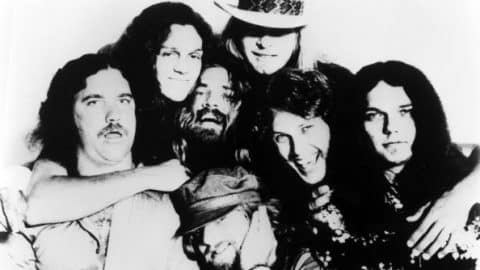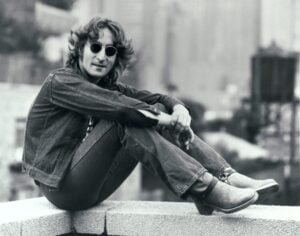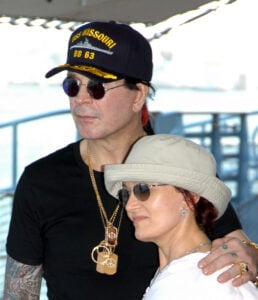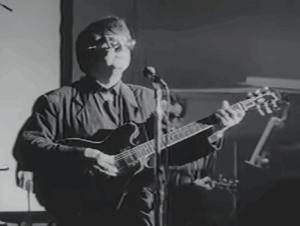The Reasons Why Lynyrd Skynyrd Became Rock Legends

UNSPECIFIED - JANUARY 01: Photo of LYNYRD SKYNYRD and Billy POWELL and Allen COLLINS and Artimus PYLE and Leon WILKESON and Ronnie Van ZANT and Steve GAINES and Gary ROSSINGTON; Posed group portrait L-R Billy Powell, Allen Collins, Artimus Pyle, Leon Wilkeson (front), Ronnie Van Zant, Steve Gaines and Gary Rossington (Photo by Grant Goddard/Redferns)
Lynyrd Skynyrd, one of Southern rock’s greatest bands, started in Jacksonville, Florida, in 1965. What began as a group of school friends—Gary Rossington, Ronnie Van Zandt, and Allen Collins—grew into a musical force. While each of them shared a passion for music, Collins was the most experienced, already performing in clubs around Florida and playing covers of songs by Cream, Led Zeppelin, and the Yardbirds. By the time they finished school in 1970, the young men had a solid musical foundation, and they soon dropped out to form the first core of Lynyrd Skynyrd. Joining them were Greg Walker on bass, Rickey Medlocke on guitar, and Bob Burns on drums.
The Band Takes Shape
In 1971, they caught the attention of Alan Walden, Capricorn Records’ manager, who saw promise in the young Southern rockers. The band recorded a demo of 17 songs at the iconic Muscle Shoals Studios in Alabama, with producer Jimmy Johnson and pianist Billy Powell, who later became a permanent member. Shortly afterward, Walker and Medlocke left to start their own band, Blackfoot and were replaced by bassist Leon Wilkeson and guitarist Ed King. Another big break came when music executive Al Kooper took an interest in them while they were in Atlanta and produced their debut album, Pronounced Leh-nerd Skin-nerd. This album introduced the world to their unique Southern rock sound with tracks like “Mississippi Kid,” “Free Bird,” “Poison Whiskey,” and “Simple Man.” “Free Bird” especially, with its unforgettable guitar solos, became an anthem and broke into the Top 20 in the U.S.
Rising Fame and Roadblocks
With hits like “Free Bird” gaining radio play, Lynyrd Skynyrd caught the attention of rock legend Pete Townshend, who invited them to open for The Who on the 1973 Quadrophenia tour. The exposure skyrocketed their fame, and soon after, they released their second album, Second Helping. Produced by Al Kooper and featuring Bobby Keys, this album contained “Sweet Home Alabama,” a song that quickly reached the American Top 10.
Despite their success, band life wasn’t always easy. Ed King left the band, feeling worn down by the demands of fame, and was replaced by Steve Gaines. Bob Burns, dealing with substance abuse issues, stepped down and was replaced by drummer Artimus Pyle, who brought humor and charm to their live shows. With a new manager, Lynyrd Skynyrd toured Europe, the United States, and Japan, often joined by backup singers Leslie Hawkins, Cassie Gaines, and Jo Billingsley, who added depth to their performances.
Tragedy Strikes But the Legacy Lives On
In 1977, just days before releasing Street Survivors, an album with a cover showing the band engulfed in flames, tragedy struck. The band’s plane crashed, killing Ronnie Van Zandt, Steve Gaines, and Cassie Gaines. In light of the accident, MCA Records pulled the original album cover, re-releasing it with a more somber image. Despite the tragedy, Lynyrd Skynyrd’s legacy only grew. In 1980, a double tribute album, Gold and Platinum, sold over three million copies. Surviving members Gary Rossington and Allen Collins later formed The Rossington Collins Band and debuted in 1980 with the album This is the Way.
In 1988, MCA released Southern by the Grace of God: Lynyrd Skynyrd Tribute Tour 1987, a double live album featuring the remaining members of Skynyrd performing their classic hits. It showcased their raw, visceral energy, featuring fan favorites like “Sweet Home Alabama,” “Call Me the Breeze,” and “Gimme Back My Bullets.”
Lynyrd Skynyrd remains a monumental name in rock history, having forged a path for Southern rock that has inspired generations.













